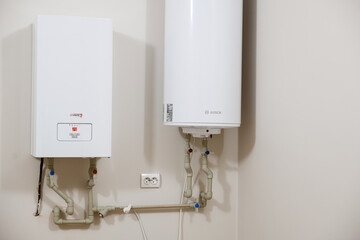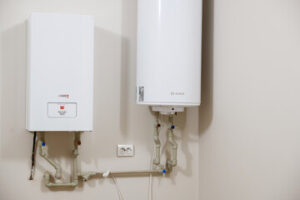
Auto painting requires a clean workspace and a garage that has sufficient space. A dust extractor would also be helpful.
If you are working from bare metal, epoxy or etch primer will be needed to prepare the surface for filler or surfacer. You must block sand the surface before priming again and finally applying the sealer. For more information, check out this website at https://juanitosautobody.com/.
There are a lot of different types of paint out there, and each has its own pros and cons. What kind you choose should really depend on your needs and the look that you’re trying to achieve – for example, some paints are easier to apply than others, while others may be hazardous to your health and will require special equipment and ventilation. You also need to consider whether you’ll be doing the job yourself or need a bodyshop.
Acrylic lacquers are a great option for those looking to get a glossy shine. However, they’re not as durable as other options and don’t last very long if exposed to sunlight. This type of paint is also often illegal in some states because it releases harmful chemicals while drying, so it’s a good idea to make sure that you check if the kind of paint that you’re using is legal in your area before you start spraying.
Another popular choice is acrylic urethane, which lasts as long as enamel but is easy to apply like lacquer. It contains a catalyst to help it dry quickly, so it’s best used as soon as it’s mixed. Urethane is available in any colour that you could want and is also great for touch-ups or resprays, as it’s extremely hardwearing.
You can also find pearlescent and metallic paints that are designed to give your vehicle a shimmering appearance, but these tend to be more suited for show cars than regular vehicles. Pearlescent paint has tiny particles of aluminium in it, while metallic has a ceramic crystal coating that reflects light to create a shine.
Non-toxic water-based paints are the latest innovation in car painting, and they’re becoming increasingly popular as a result of their safety and environmental benefits. They’re also a great option for those who don’t want to use harmful chemicals or need the paint to dry quickly, as they’re quick and easy to apply.
Obviously, these aren’t ideal for those who want to do the job themselves because they need a little bit of practice before you can get the hang of it. However, if you’re happy to leave it to the professionals, you’ll find that it will save you a lot of time and money in the long run.
Primer
Dents, dings and scratches on your car can ruin its overall appearance. Fortunately, these flaws are easily fixable with painting or repainting. However, to ensure that the paint job you do is top-notch, you must start with a high-quality primer. You can find many options for automotive primer online, but the best choice will depend on your needs and budget. The cheapest option is an aerosol primer that comes in a small can and applies quickly. It can also be bought at most hardware stores. However, the aerosol primer may not be as smooth as a conventional primer and can take longer to dry.
The next most affordable option is a high-quality auto primer from Rustoleum. This product is ideal for metal surfaces and provides a good base for the paint coats. It is also rust-preventative and dries to a neutral color that hides coloring from the old paint. It is easy to use and dries fairly quickly, but it will need more than one coat to achieve a uniform surface.
Another option is a urethane primer from Dupli-Color. This product is suitable for most facets of automotive maintenance and restorations. It dries to a clear, neutral color and can be used on both metal and plastic surfaces. It also has excellent sanding and feather edging abilities. This product is also rust-preventive and dries quickly.
A polyester primer surfacer is also a good choice for little repair projects. It has what is known as an excellent aEURbuildaEUR(tm) that makes it perfect for filling in dings and dents and can help you avoid the need to putty. It also sands down well and can be used to replace bodywork.
If you are looking for a more expensive option, you should consider an epoxy-based automotive primer. This type of primer is more durable and dries to a glossy finish, which will make it easier to sand and prepare the surface for painting. It is also a great choice for older vehicles that have been repainted before and needs extra protection from rust. It is also available in a wide range of colors, making it easy to match the original color of your vehicle.
Sealer
A sealant is a synthetic chemical product that protects the clear coat of your car. The sealant creates a sacrificial barrier that protects the paint from contamination such as brake dust, road grime, dirt, bird droppings, and tree sap. It also guards against UV exposure and moisture, making your paint easier to clean with less abrasive cleaners. The sealant will help your car’s paint remain shiny and look new for longer and enhances its appearance with a deep gloss and warmth.
There are two primary types of paint sealant. Pure paint sealants will last much longer than waxes due to their chemical bonding with the top layer of your paint. The other type are sealers with cleaners in them (sometimes called all-in-ones). The cleaners will remove mild oxidation and fine scratches for an all-in-one experience. The cleaners are not recommended on paint that has been compounded or polished as it will simply wear away the good coating of your paint.
If you are going to use a cleaner/sealer you must be sure to follow the instructions carefully. You can apply the sealant by hand or with a machine but the key is to get an even, thin layer of product across your entire vehicle. Once you have applied the product allow it to dry for the time indicated on the bottle or by your professional (typically no more than a few hours). After the sealant has cured you can buff off any residue with a plush microfiber towel and then polish off the car with a wax or a slicker like WOWO for additional shine and protection.
Painting your car is a fun way to add personality and customize your ride. The most important thing to remember when painting your car is proper preparation, including applying primer and sanding. National Autobody Wholesalers has all the supplies you need for your paint and sealant project. We have everything from polyester primer to urethane primer and a wide range of auto body paint colors. Shop with us to get the best quality products for your next DIY auto paint job.
Paint Coats
A vehicle’s paint coating is made of four parts – pigment, thinner, binder, and additives. These are mixed together to deliver a coating that meets the design needs of the car. The paint coat protects the surface and frame from abrasion, corrosion, chemical damage, weathering and other environmental elements. The coat also adds a glossy shine to the paint finish.
The first layer in the process is the primer, which helps get the surface ready for the actual paint. This is a very important step as it ensures that the base and clear coats will consistently bond/stick to the surface of your car. Without this, your car will suffer from flaking and peeling which can ruin its look and void any warranty it may have.
After the primer has been applied, a base color coat is then added to the vehicle. The choice here can be either a solid color or a metallic/pearlescent. Both provide a very different look to your vehicle and have their own advantages and disadvantages. For example, metallic paints are a more durable option as they are resistant to scratches and other imperfections. However, they can also have a harder time matching your vehicles current color due to the way their pigment is created.
Lastly, the clear coat is then added on top. The clear coat is designed to protect the base/color layer and help the finish last longer. It is a very thin layer, measuring about 5 microns. Most modern clear coats are urethane, which provides greater physical hardness and abrasion resistance than water based clear coats. In addition, urethane clear coats are able to withstand higher temperatures than water based clear coats which is important for the overall protection of the finish.
While clear coats are incredibly common, they are not mandatory on all cars. In fact, some vehicles are painted using a single-stage painting system, which only has the color coat and no clear coat. This can give the vehicle a less glossy finish but is still very durable and easy to maintain. Other options include midcoats, which are a three-stage system that uses a translucent color layer containing pearls or other additives on top of the solid color base layer. This can create some truly unique colors such as white pearl tri-coats or chameleon paints.


